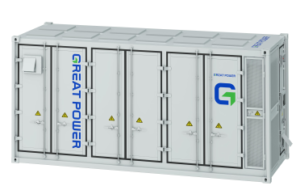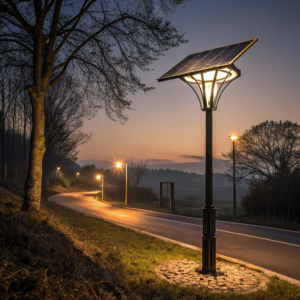Thermal Management in PV Modules: Cooling and Encapsulation
•
Why do solar panels lose efficiency as temperatures rise? Understanding thermal effects and mitigation strategies is crucial for maximizing photovoltaic system performance.
PV module efficiency decreases 0.3-0.5% per °C temperature rise due to increased charge carrier recombination, making thermal management essential for maintaining optimal power output in real-world conditions.
With module temperatures regularly exceeding 65°C in sunny climates, effective cooling and encapsulation solutions can improve energy yield by 5-15% while extending system lifespan.
How Does Temperature Rise Affect PV Cell Efficiency?
What happens inside a solar cell when it gets too hot? The physics of semiconductor materials reveals why cooling matters more than most installers realize.
Higher temperatures reduce PV cell voltage output by increasing intrinsic carrier concentration, with crystalline silicon cells losing about 2mV per °C - compounding to significant power losses on hot days.
The Temperature-Efficiency Relationship Explained
-
Fundamental Physics
- Bandgap narrowing at higher temperatures
- Increased electron-hole recombination rates
- Reduced open-circuit voltage (Voc)
-
Material-Specific Impacts Cell Type Efficiency Loss per °C Monocrystalline Si 0.35-0.45% Polycrystalline Si 0.40-0.50% Thin-film CdTe 0.25-0.30% CIGS 0.30-0.35% -
Real-World Consequences
- 10-25% seasonal output variation due to temperature
- Hot spots can cause permanent damage
- Accelerated degradation of materials
"A 20°C temperature increase can reduce annual energy production by 7-10% in moderate climates, and up to 15% in desert regions" - NREL Field Study Data
Common Cooling Materials and Design Approaches
What practical solutions exist to keep solar panels cool? Engineers have developed multiple approaches ranging from simple passive methods to advanced active systems.
Passive cooling techniques like radiative coatings and phase change materials can lower operating temperatures by 5-15°C, while active water cooling systems may achieve 20-30°C reductions but with added complexity.
Cooling Technology Breakdown
-
Passive Solutions
- Aluminum heat sinks (3-8°C reduction)
- Thermally conductive backsheets
- Infrared-reflective glass coatings
-
Advanced Materials Material Cooling Mechanism Temp Reduction Phase Change Latent heat absorption 5-12°C Hydrogel Evaporative cooling 8-15°C Aerogel Thermal insulation 4-7°C -
Active Systems
- Water-cooled PVT hybrids
- Forced air circulation
- Heat pipe integration
Best Practice: For most utility-scale installations, passive radiative cooling combined with proper airflow provides the best balance of performance and cost-effectiveness.
Active vs. Passive Thermal Management: A Comparative Study
When does it make sense to invest in active cooling systems? The choice depends on climate conditions, system scale, and economic factors.
Active cooling delivers superior temperature control (15-30°C reductions) but increases system complexity and energy consumption, while passive methods offer simpler, maintenance-free operation with more modest 5-15°C improvements.
Decision Factors for Cooling Approaches
-
Performance Comparison Metric Passive Active Temp Reduction Moderate High Energy Penalty None 3-8% Maintenance Low High Cost Increase 5-15% 20-40% -
Application Guidelines
- Desert climates: Active may justify ROI
- Residential: Passive usually sufficient
- Commercial rooftops: Hybrid approaches
-
Emerging Hybrid Solutions
- Thermoelectric generators
- Selective spectral cooling
- Bio-inspired designs
Key Consideration: Active systems become more viable when waste heat can be utilized for thermal loads (PVT systems), improving overall energy utilization to 60-80%.
Conclusion
Effective thermal management through strategic cooling and encapsulation can significantly boost PV system performance, with optimal solutions balancing temperature reduction against implementation complexity and cost.








